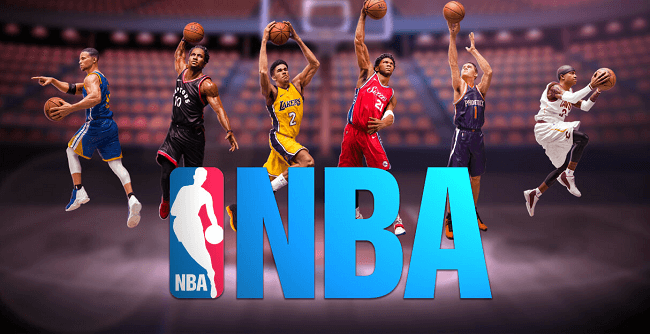Basketball has long been a cornerstone of American sports culture, with the National Basketball Association (NBA) leading its evolution. As the league progresses, several emerging trends and innovations are poised to redefine the game for players, teams, and fans alike.
Embracing Positionless Basketball
Traditionally, basketball positions were clearly defined: point guards orchestrated plays, centers dominated the paint, and forwards balanced both roles. Today, the NBA is witnessing a shift towards “positionless basketball,” where versatility is paramount.
Players are now expected to handle the ball, shoot from distance, and defend multiple positions, regardless of their size or traditional role. This evolution allows teams to deploy more dynamic and unpredictable strategies, creating mismatches and keeping opponents on their toes. Teams like the Golden State Warriors have exemplified this approach, utilizing versatile lineups to great success.
The Three-Point Revolution
The past decade has seen a significant increase in three-point shooting across the league. Advanced analytics have highlighted the efficiency of the three-point shot, leading teams to prioritize spacing the floor and maximizing scoring opportunities from beyond the arc.
This shift has transformed offensive strategies, with players across all positions honing their long-range shooting skills. The emphasis on three-point shooting has not only changed game dynamics but also influenced player development at all levels. Today’s young players grow up modeling their game after sharpshooters like Stephen Curry and Damian Lillard, making perimeter shooting a must-have skill for aspiring professionals.
Leveraging Advanced Analytics and Wearable Technology
In the modern NBA, data is king. Teams are increasingly relying on advanced analytics to inform decision-making, from player recruitment to in-game strategies. Metrics such as Player Efficiency Rating (PER) and Real Plus-Minus (RPM) offer deeper insights into player contributions beyond traditional statistics.
Additionally, wearable technology provides real-time data on player performance, health, and fatigue levels. Smart devices track movement, biomechanics, and cardiovascular health, helping coaching staff make informed decisions on training, rest, and injury prevention. This data-driven approach ensures that players perform at their peak while minimizing the risk of injury.
The Globalization of Talent
Basketball’s popularity has surged worldwide, leading to an influx of international talent in the NBA. Players from Europe, Africa, Asia, and South America are making significant impacts, bringing diverse playing styles and perspectives.
This globalization has not only enriched the league’s talent pool but also expanded its global fan base. NBA stars like Giannis Antetokounmpo, Luka Dončić, and Nikola Jokić exemplify the rise of international players dominating the league. The NBA’s initiatives, such as Basketball Without Borders, aim to develop talent globally and strengthen the sport’s international presence.
As more international players enter the league, teams are adapting their scouting strategies to identify the next global superstar. This shift ensures that the NBA remains a melting pot of elite talent from all corners of the world.
Enhancing Fan Engagement Through Digital Platforms
In the digital age, the NBA is exploring innovative ways to engage fans. The league has embraced social media, live streaming, and virtual reality (VR) to create a more immersive fan experience.
Platforms like Twitter, Instagram, and TikTok provide real-time updates, highlights, and behind-the-scenes content, allowing fans to stay connected with their favorite teams and players. The NBA has also experimented with augmented reality (AR) and VR experiences, giving fans the chance to watch games from unique perspectives.
The shift towards streaming services is another game-changer. Traditional cable TV is gradually being replaced by on-demand sports streaming, allowing fans to watch games anytime, anywhere. This move not only enhances accessibility but also broadens the league’s reach globally.
The Impact of Sports Betting
The expansion of legalized sports betting in the United States has introduced new dynamics to the NBA landscape. Fans now have the opportunity to engage with the game on a different level, placing bets on various aspects of play, from individual player performances to final scores.
While this adds excitement, it also necessitates a focus on integrity and responsible gambling practices. The NBA has partnered with betting companies to ensure transparency and prevent match-fixing scandals. Moving forward, the league will need to navigate this evolving landscape carefully, balancing fan engagement with the preservation of the sport’s integrity.
The Future of NBA Expansion
With the NBA’s growing popularity, discussions about league expansion have intensified. Cities like Seattle and Las Vegas have emerged as strong contenders for new franchises. Seattle, home to the beloved SuperSonics until their relocation in 2008, has a passionate fanbase eager for a team. Las Vegas, a booming sports hub, has also proven its ability to support professional teams with the success of the NHL’s Golden Knights and the NFL’s Raiders.
Expanding the league could bring financial benefits, increase market reach, and create more opportunities for players. However, it also comes with challenges, including maintaining competitive balance and ensuring adequate talent distribution across teams. If the NBA decides to add new franchises, it will likely require careful planning to avoid diluting the league’s overall quality.
Evolving Player Empowerment and Superteams
In recent years, player empowerment has reshaped the NBA. Superstars have taken control of their careers, forming “superteams” by teaming up with other elite players through free agency or trade demands. While this has led to exciting matchups and intense rivalries, it has also sparked debates about league parity.
Critics argue that superteams create imbalances, making it harder for smaller-market teams to compete. On the other hand, advocates believe that players should have the right to control their destinies, just like executives and team owners do. The NBA may need to consider salary cap adjustments or other measures to maintain competitive fairness while respecting players’ autonomy.
Conclusion
The NBA stands at the forefront of basketball’s evolution, embracing changes that enhance the game for players and fans alike. From the rise of positionless basketball and the three-point revolution to the integration of advanced analytics and global talent, the league is continually adapting to the modern era.
As technology advances and the global community becomes more interconnected, the NBA’s commitment to innovation ensures that basketball will remain a dynamic and beloved sport for generations to come. Whether through new playing styles, digital fan experiences, or international expansion, the future of basketball in America—and beyond—looks brighter than ever.
More Updates : USA Glory.






